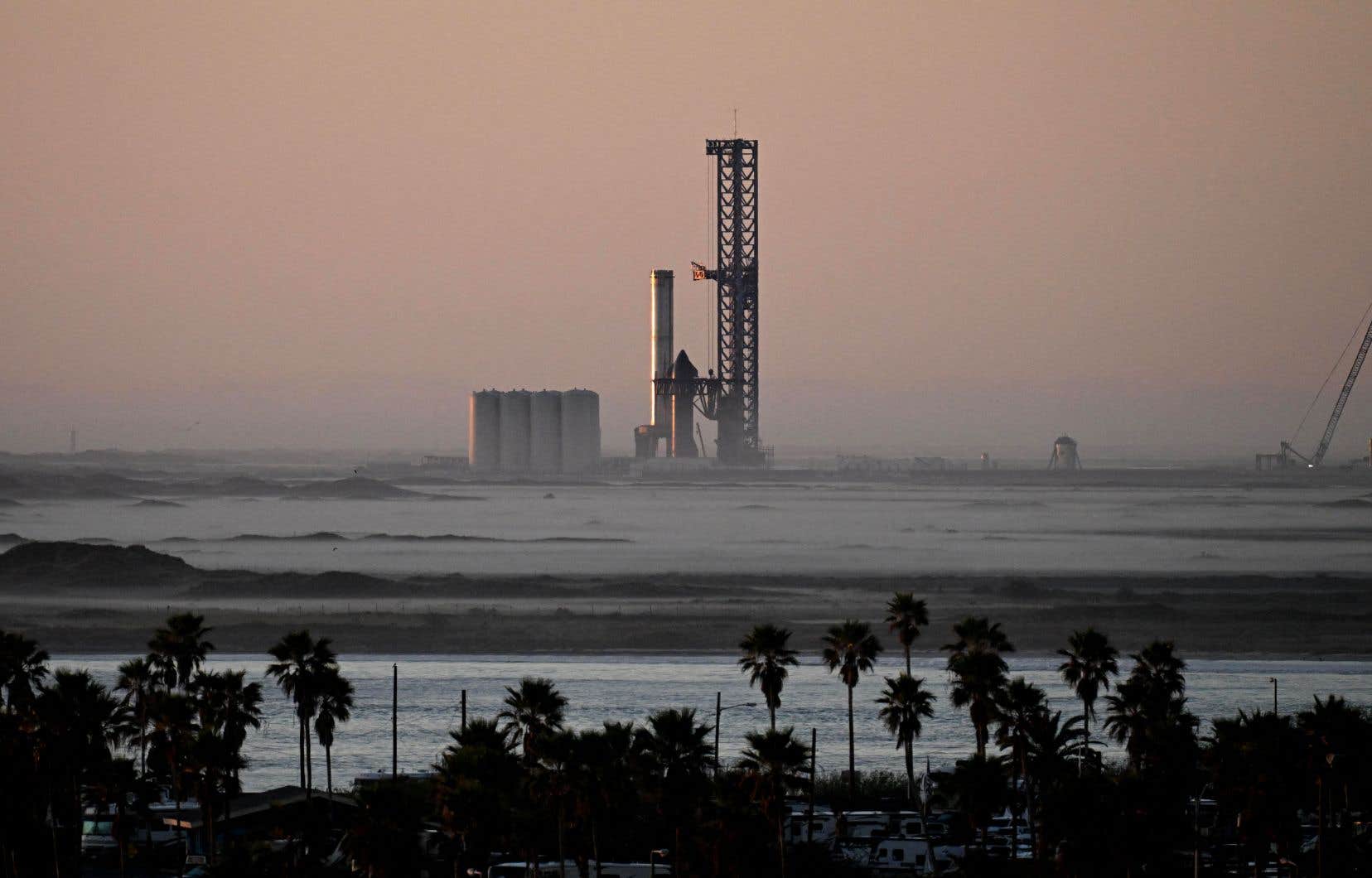Both stages of SpaceX’s massive Starship rocket exploded shortly after their successful separation on Saturday, Elon Musk’s company announced in the live video stream of the second test launch of this rocket, the most powerful ever built.
The Super Heavy propulsion stage and its 33 engines, and the Starship, placed above and which gives its name to the entire rocket, experienced an “unplanned rapid disassembly” in the company’s words. Starship’s first test flight ended in the spring with a gigantic explosion before the two stages separated.
“Nominal Starship trajectory,” we could hear on the live video feed, a few minutes after the rocket took off.
The Starship module, placed at the top of the rocket, successfully separated from the Super Heavy propulsion stage, which did not survive its scheduled descent and suffered an explosion, according to commentators on the video stream.
The giant 120-meter-high rocket ripped off the ground shortly after 7 a.m. local time (8 a.m. Montreal time) from SpaceX’s base in Boca Chica, in the far south of Texas, in the United States.
This second test flight by SpaceX, the company of billionaire Elon Musk, is being closely scrutinized by NASA, which is counting on this vessel for its return missions to the Moon.
On April 20, Starship took off for the first time in its full configuration. But several engines did not work, and SpaceX intentionally blew up the rocket after four minutes.
The takeoff had propelled a cloud of dust several kilometers from the launch pad, itself heavily damaged. Chunks of concrete were catapulted under the power of the engines, and a fire broke out in a nearby regional park.
The American air regulator (FAA) opened an investigation, before finally giving the green light on Wednesday for a second flight.
“Environmental damage”
Over seven months, the launch pad was rebuilt, and a water “deluge” system was installed and tested. These downpours of water discharged when the engines are started must attenuate the acoustic waves, limiting vibrations.
However, associations are separately suing the FAA, accused of having incorrectly assessed the environmental impact of the new rocket. “We fear that this second launch will once again create significant environmental damage,” Jared Margolis, lawyer for the NGO Center for Biological Diversity, told AFP.
The rocket is made up of two stages: the Super Heavy propulsion stage and its 33 engines, and the Starship spacecraft, placed above and which by extension gives its name to the entire rocket.
During the first test, these two stages failed to separate in flight.
The separation system was therefore changed, Elon Musk said during a conference in early October, adding that testing this system would be “the riskiest part” of the second flight.
“I don’t want to raise too high hopes,” warned the boss of SpaceX.
The flight plan is the same as in April: the vessel must make an “almost complete tour of the Earth” and land in the Pacific, off the coast of Hawaii, the billionaire described. It will not technically reach Earth’s orbit, but will be “just below”.
For the company, the explosion of prototypes is less problematic in terms of image than it would be for NASA and its public funds, according to experts. Chaining together tests using a rapid iteration process allows it to accelerate the development of its machines.
“Absurd size”
But the development of Starship does not seem to be fast enough to match the plans of the American space agency, which has signed a contract with SpaceX. A modified version of the machine must serve as a lunar lander to place astronauts on the lunar surface for the first time since 1972.
This mission, named Artemis 3, is officially planned for 2025 – a date that seems increasingly unrealistic.
Beyond the Moon, Elon Musk wants to make Starship “a widespread means of transportation to any destination in the solar system”, including Mars.
Its goal is the establishment of an autonomous colony on the red planet, in order to make humanity a multiplanetary species.
If Starship’s size is “absurd,” he explains, it’s because building a “permanent base on the Moon and a city on Mars” requires carrying millions of tons of payload.
But the real innovation of Starship is that it must be entirely reusable, the two stages being designed to eventually return to land on their launch pad – thus reducing costs. Only the first stage of SpaceX’s Falcon 9 rocket is currently recovered.
Starship is both larger than NASA’s new mega-rocket, SLS (98 m), which took off for the first time a year ago, and the legendary Saturn V, the rocket for the lunar program Apollo (111 m).
Starship’s liftoff thrust is also about twice as powerful as these two launch vehicles.
